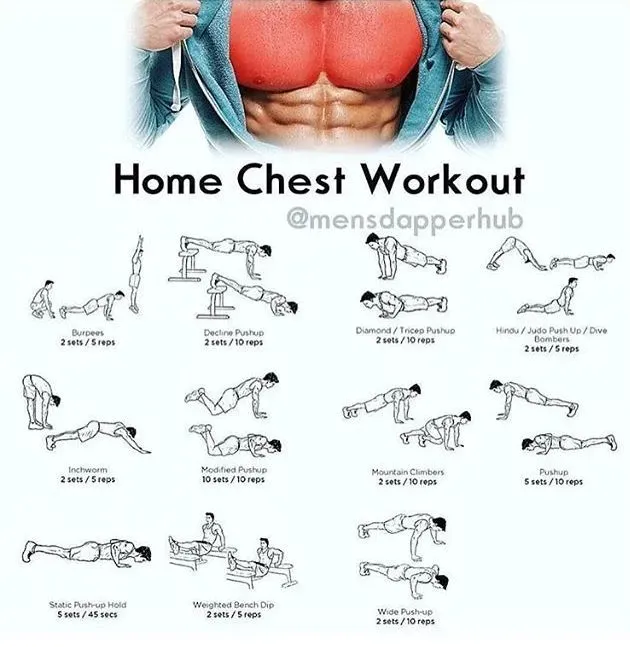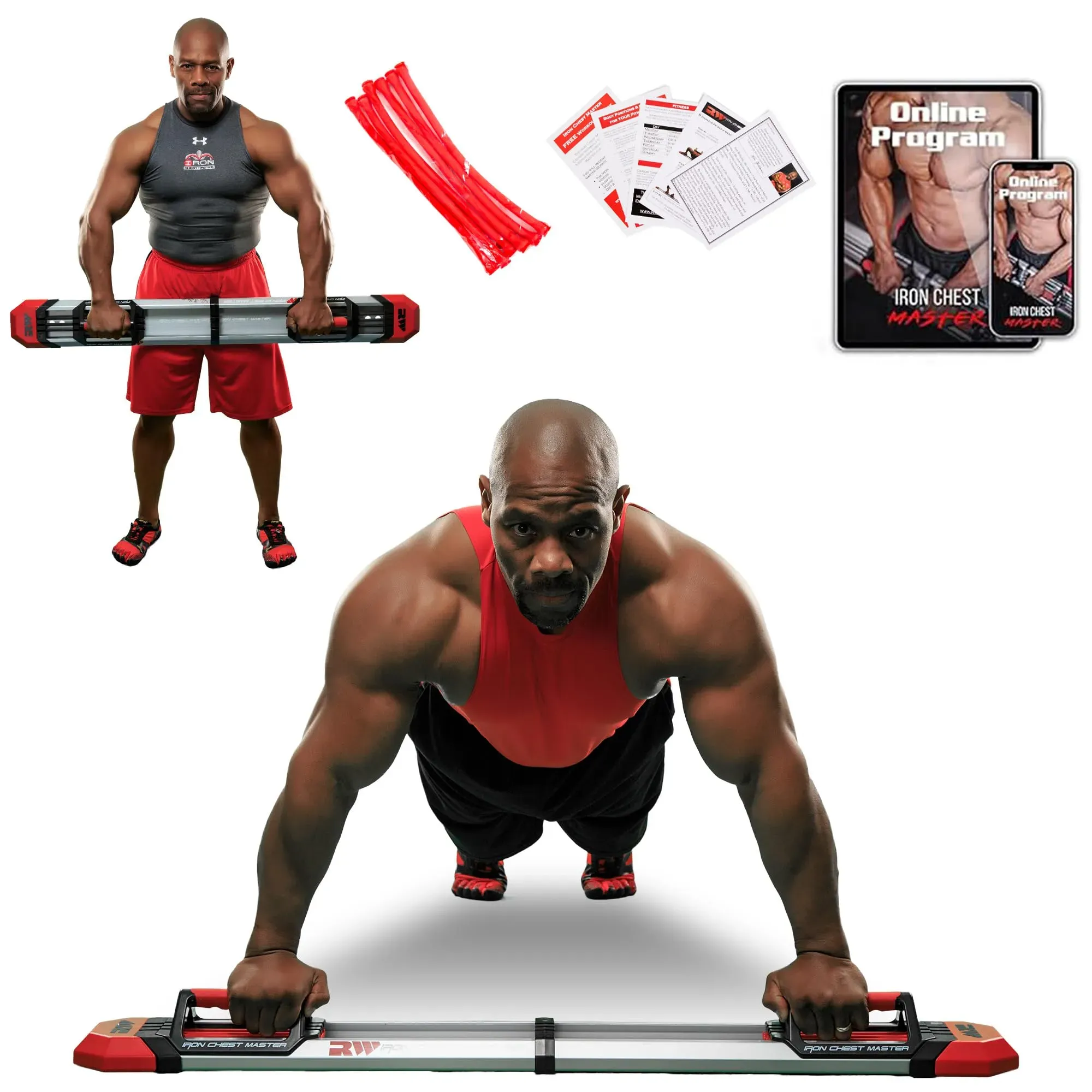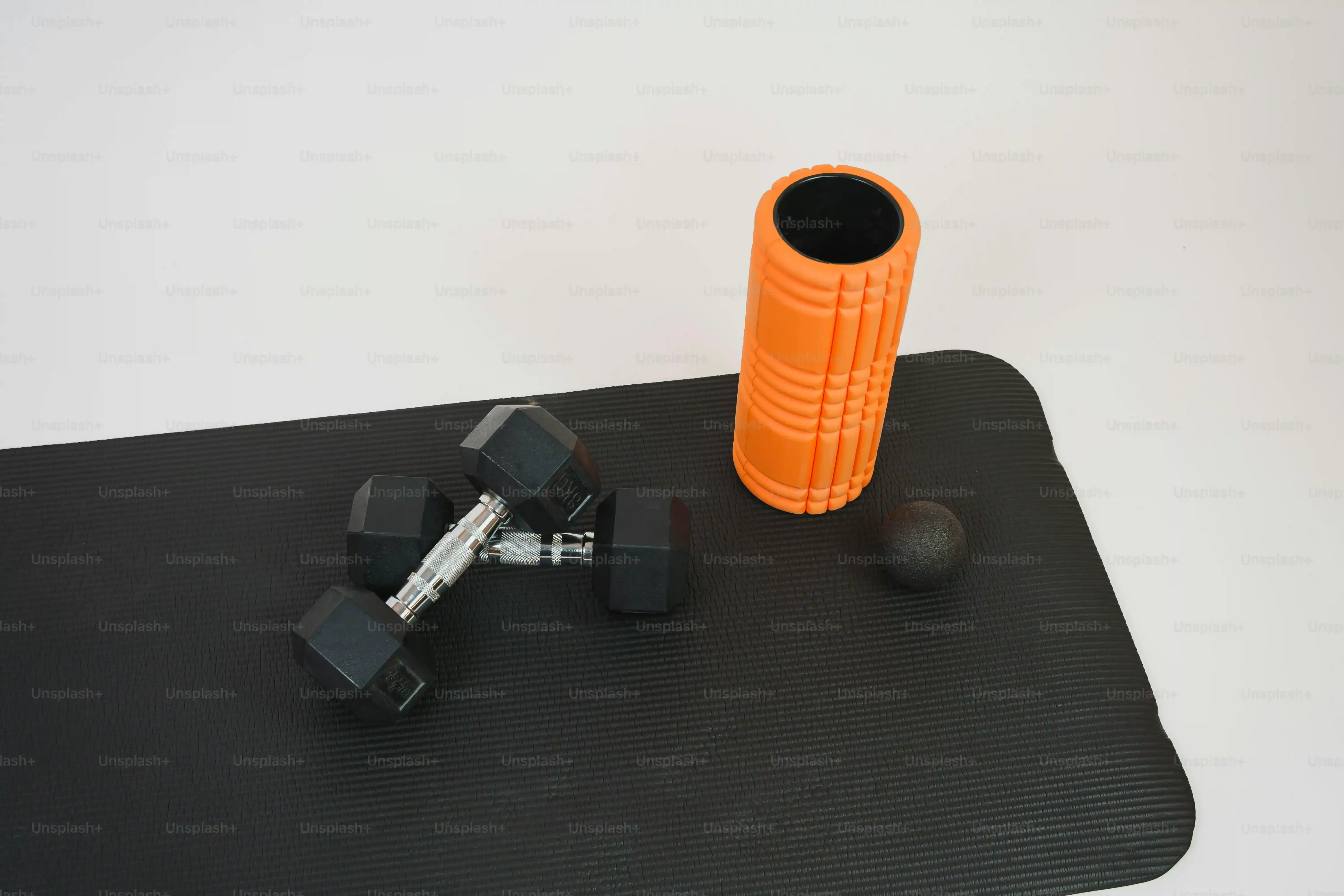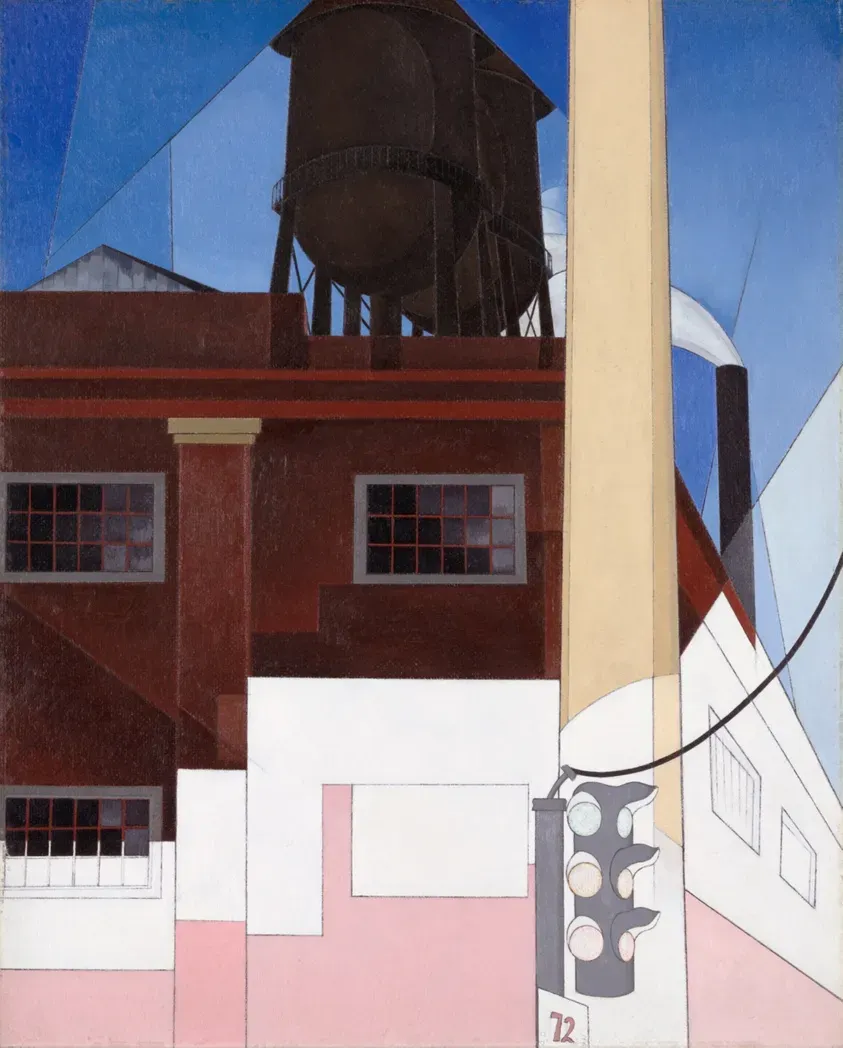Table of Contents
Tired of waiting for a bench press at the gym, or maybe you just prefer the comfort of your own space? Building a strong, defined chest doesn't require a pricey gym membership or a basement packed with machines. You can absolutely forge impressive pecs right where you live. The secret lies in understanding and utilizing the right at home chest workout equipment.
Beyond the Bench: What Counts as At Home Chest Workout Equipment?

Beyond the Bench: What Counts as At Home Chest Workout Equipment?
Your Bodyweight: The Original At Home Chest Workout Equipment
When people think about building a chest, their minds often jump straight to barbells loaded with plates or fancy machines. But honestly, the most fundamental piece of at home chest workout equipment you already own is your own bodyweight. Think about it: push-ups, dips between chairs, incline push-ups off a sturdy table. These aren't just beginner moves; they're scalable, versatile, and incredibly effective for hitting the chest, shoulders, and triceps. Mastering bodyweight movements builds a solid foundation of strength and stability that translates to everything else.
You can manipulate angles, hand positions, and tempo to constantly challenge your muscles. Elevating your feet increases the load on the upper chest and shoulders. Widening your grip targets the outer chest more. Slowing down the lowering phase (the eccentric part) creates more muscle damage, which is key for growth. Don't dismiss the power of simply getting good at pushing your own mass around. It's accessible, free, and requires zero storage space.
Adding Resistance: Bands, Dumbbells, and Simple Tools
Once you've got bodyweight down, or if you want to add external resistance, the next tier of at home chest workout equipment comes into play. Resistance bands are incredibly portable and offer variable tension, meaning the resistance increases as you stretch the band. They're fantastic for flyes, press variations, and even replicating cable movements at home. A decent set of loop bands or tube bands with handles can fit in a drawer and open up a ton of exercise possibilities.
Dumbbells are another classic for a reason. A pair of adjustable dumbbells saves space and allows for progressive overload as you get stronger. You can do floor presses, flyes, pullovers, and more. Even a single heavy dumbbell can be used for certain movements. These tools provide a consistent load you can track and increase over time, a critical factor for muscle growth.
Here are a few simple, effective pieces of home chest gear:
- Resistance Bands (loops or tubes)
- Dumbbells (fixed weight or adjustable)
- Push-up Bars
- Stability Ball
- Suspension Trainer (like TRX)
Beyond the Basics: Push-Up Aids and Suspension Systems
Moving slightly beyond just bands and dumbbells, there's other effective at home chest workout equipment that doesn't break the bank or take up your entire living room. Push-up bars, for instance, increase the range of motion during push-ups, allowing for a deeper stretch at the bottom of the movement, which can stimulate more muscle fibers. They also take pressure off your wrists if that's an issue.
Suspension trainers that anchor to a door frame or ceiling hook are incredibly versatile. They use your bodyweight but allow you to adjust the angle (and thus the difficulty) easily. You can perform suspended push-ups, flyes, and other challenging variations that hit your chest from different angles. These tools offer a great balance of effectiveness, portability, and relatively low cost compared to full machines.
Choosing Your Weapon: Picking the Right At Home Chest Workout Equipment
Alright, so you've seen you don't need a whole gym to hit your chest hard at home. Now comes the slightly trickier part: figuring out which specific bits of at home chest workout equipment are actually worth your hard-earned cash and limited space. It's easy to get overwhelmed by all the gadgets and gizmos out there promising miracle chests. The key is to be realistic about your goals, your budget, and how much room you actually have. Are you just starting out and need something simple and versatile? Or are you looking to add serious weight and need something more substantial? Don't just buy the shiny new thing; think about what movements you want to do and what tool best facilitates that.
Seriously Effective: Workouts Using Your At Home Chest Workout Equipment

Seriously Effective: Workouts Using Your At Home Chest Workout Equipment
you’ve got your gear sorted – maybe a set of adjustable dumbbells, some sturdy resistance bands, or just committed to mastering bodyweight. Now for the real work: actually building that chest. Having the best at home chest workout equipment sitting in the corner does exactly nothing for your pec development. It's about applying intelligent training principles with the tools you have. You need structure, progressive overload, and the willingness to push yourself. Don't just randomly grab a band and do a few presses; think about sets, reps, tempo, and hitting the muscle from different angles. A well-structured home workout can be just as brutal and effective as anything you'd do in a crowded gym, provided you know how to program it.
Common ScrewUps (and How to Fix Them) with Home Chest Gear

Common ScrewUps (and How to Fix Them) with Home Chest Gear
Ignoring Proper Form Just Because You're Alone
One of the biggest traps people fall into when using their at home chest workout equipment is letting their form go to hell because nobody's watching. In the gym, maybe you feel a little peer pressure to lift with some semblance of technique. At home? It's easy to just crank out reps any way you can. Bad form doesn't just make the exercise less effective; it's a fast track to injury. You might be doing push-ups with your elbows flared out like chicken wings, or slamming dumbbells down during floor presses. This doesn't build a chest; it builds shoulder pain.
Fixing this starts with awareness. Film yourself. It feels awkward, but seeing what you're actually doing is eye-opening. Focus on controlled movements, feeling the muscle work, and maintaining tension throughout the set. For push-ups, keep your elbows tucked closer to your body, roughly at a 45-degree angle. On dumbbell presses, lower the weights slowly and deliberately, getting a good stretch at the bottom before pressing back up. Quality over quantity, always.
Thinking Bodyweight Isn't "Enough" Anymore
Once folks get a set of dumbbells or some bands, they often completely abandon bodyweight exercises. They think, " I've got equipment now, push-ups are for beginners." This is a mistake. Bodyweight exercises, especially push-ups, are fundamental chest builders. Just because you can do 20 standard push-ups doesn't mean they aren't valuable at home chest workout equipment.
You can make bodyweight movements incredibly challenging. Elevate your feet to target the upper chest. Do deficit push-ups using push-up bars for a greater range of motion. Try single-arm variations or plyometric (explosive) push-ups. Integrate tempo work, like taking 5 seconds to lower yourself. Bodyweight exercises build stability and core strength that free weights sometimes don't emphasize as much. Keep them in your routine, even as you add other gear.
Here's a quick comparison of common home gear approaches:
Equipment Type | Pros for Chest | Cons for Chest |
|---|---|---|
Bodyweight (Push-ups) | Free, versatile, builds stability, scalable difficulty | Can be hard to add significant load without advanced variations |
Resistance Bands | Portable, variable tension, good for flyes/finishing | Resistance isn't linear, can feel awkward for heavy presses |
Dumbbells | Consistent load, good for presses and flyes, easy progression | Can require significant space/cost for a range of weights |
Not Using the Full Range of Motion
Whether you're using dumbbells on the floor, bands, or even bodyweight, cutting your reps short is a classic blunder. You see it all the time: people doing little half-reps on push-ups or only lowering dumbbells halfway down during presses. A full range of motion stretches the muscle fibers more effectively, leading to better growth and flexibility over time. If you can't complete a rep through the full range with good form, the weight (or variation) is too difficult.
To fix this, consciously focus on the eccentric (lowering) phase of each exercise. For push-ups, lower your chest all the way to the floor (or close to it) while maintaining tension. With dumbbells, lower them until your elbows are just below your shoulders (if using a bench or elevated surface) or until your triceps touch the floor (for floor presses). If you're using bands for flyes, stretch them across your chest fully before bringing your hands together. Don't cheat yourself out of the gains by being lazy with your range of motion.
Scaling Up: When to Invest in More At Home Chest Equipment

Scaling Up: When to Invest in More At Home Chest Equipment
Hitting a Plateau with Your Current Setup?
so you've been grinding away with your current setup – maybe just bodyweight and bands, or a basic set of dumbbells. You've mastered the variations, you're strong, and you're not feeling the same challenge anymore. The gains have slowed down. This isn't failure; it's progress! It means your muscles have adapted to the stimulus you're providing with your existing at home chest workout equipment. If you can crank out 30 perfect push-ups without breaking a sweat, or your resistance bands feel like rubber bands snapping with ease during flyes, that's a pretty clear sign.
Listen to your body and pay attention to your performance. Are you consistently hitting the top end of your rep ranges (say, 15-20+ reps) on most exercises and it still feels easy? Are you finding it hard to make bodyweight variations challenging enough without resorting to awkward or potentially risky positions? These are strong indicators that it's time to consider adding some heavier artillery to your collection of at home chest workout equipment to keep progressing and avoid stagnation.
What's the Next Logical Step in Home Chest Gear?
Once you've outgrown the basics, the next investment in at home chest workout equipment usually involves adding more significant, trackable resistance. Adjustable dumbbells are often the first logical step for many, allowing you to gradually increase the weight as you get stronger without buying a full rack. Look for sets that go up to a decent weight range, maybe 50-75 pounds per dumbbell, to give you room to grow.
Another option, if you have the space and budget, is a weight bench. Even a simple, flat bench opens up exercises like dumbbell presses and flyes with a greater range of motion than just lying on the floor. Pair this with heavier dumbbells, and you've significantly upgraded your capacity for progressive overload. Consider your space carefully, though. A bench takes up more real estate than bands or small dumbbells, but it can be a game-changer for chest development at home.
Sign You Need More Gear | Potential Equipment Upgrade | Why it Helps |
|---|---|---|
Bodyweight push-ups feel too easy (20+ reps) | Push-up bars, Weighted vest | Increases range of motion, adds direct load |
Bands offer too little resistance at full stretch | Heavier resistance bands, Adjustable dumbbells | Provides higher, more consistent tension |
Floor presses lack range of motion | Weight bench (flat or adjustable) | Allows deeper stretch, better muscle activation |
Your Home Gym, Your Chest Gains
So there you have it. Building a formidable chest doesn't hinge on having access to a room full of shiny, expensive machines. With the right at home chest workout equipment – be it resistance bands, a solid pair of dumbbells, or even just a sturdy set of push-up handles – consistent effort and smart programming will get you where you want to go. Stop making excuses about the gym commute or the crowded racks. Your living room, garage, or even a small corner can become a legitimate training ground. Pick your gear, put in the work, and watch your chest respond.
